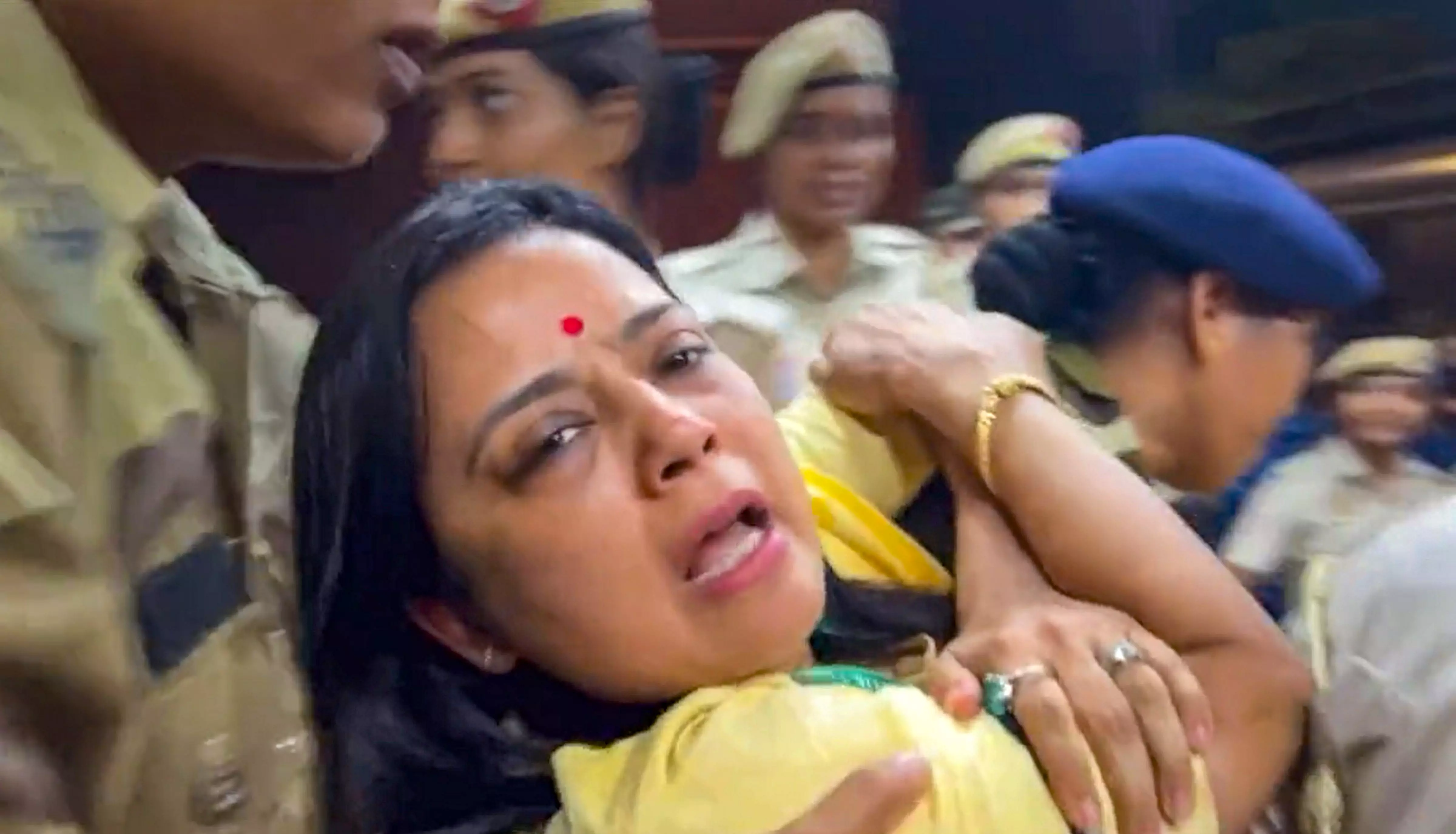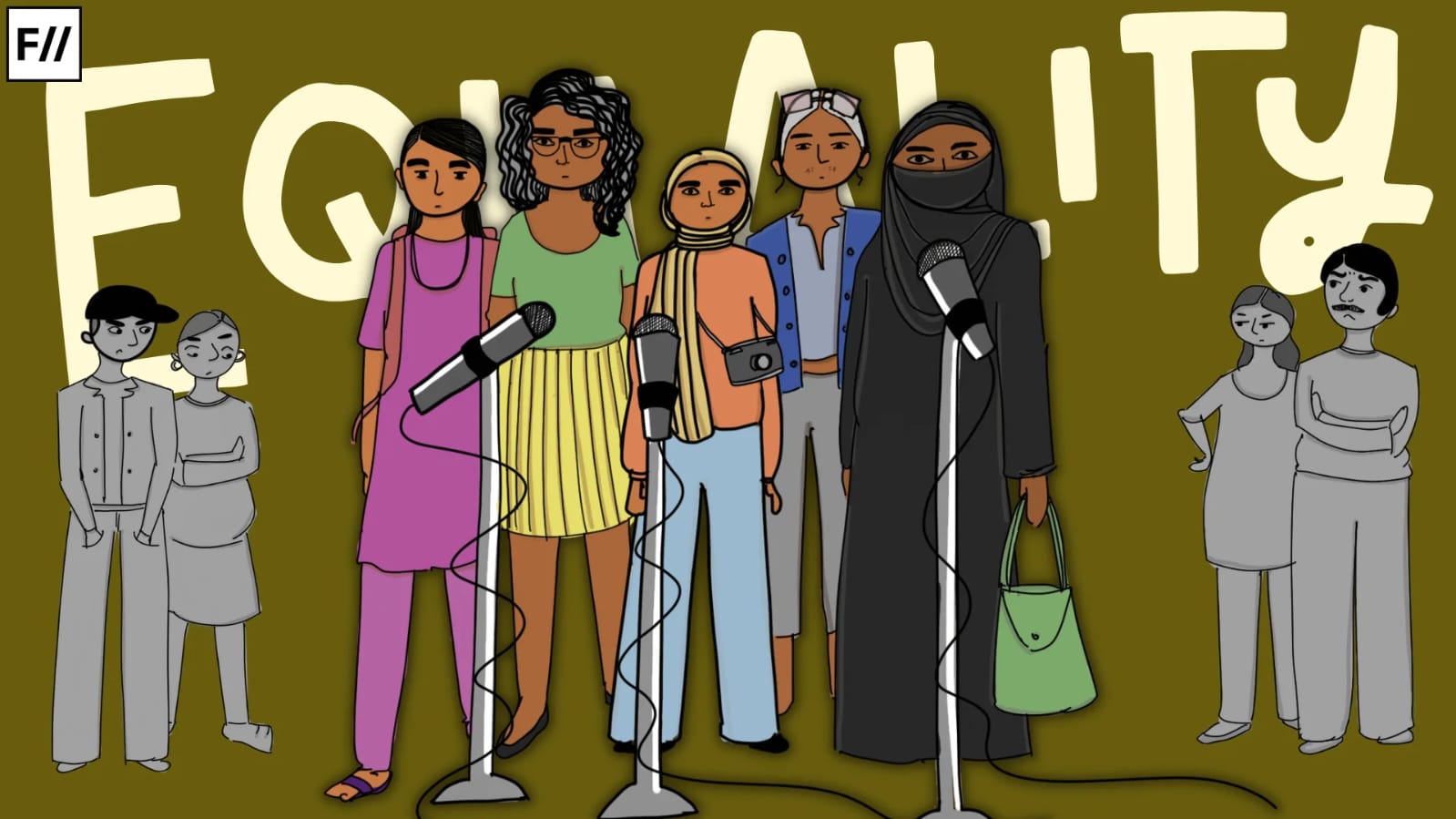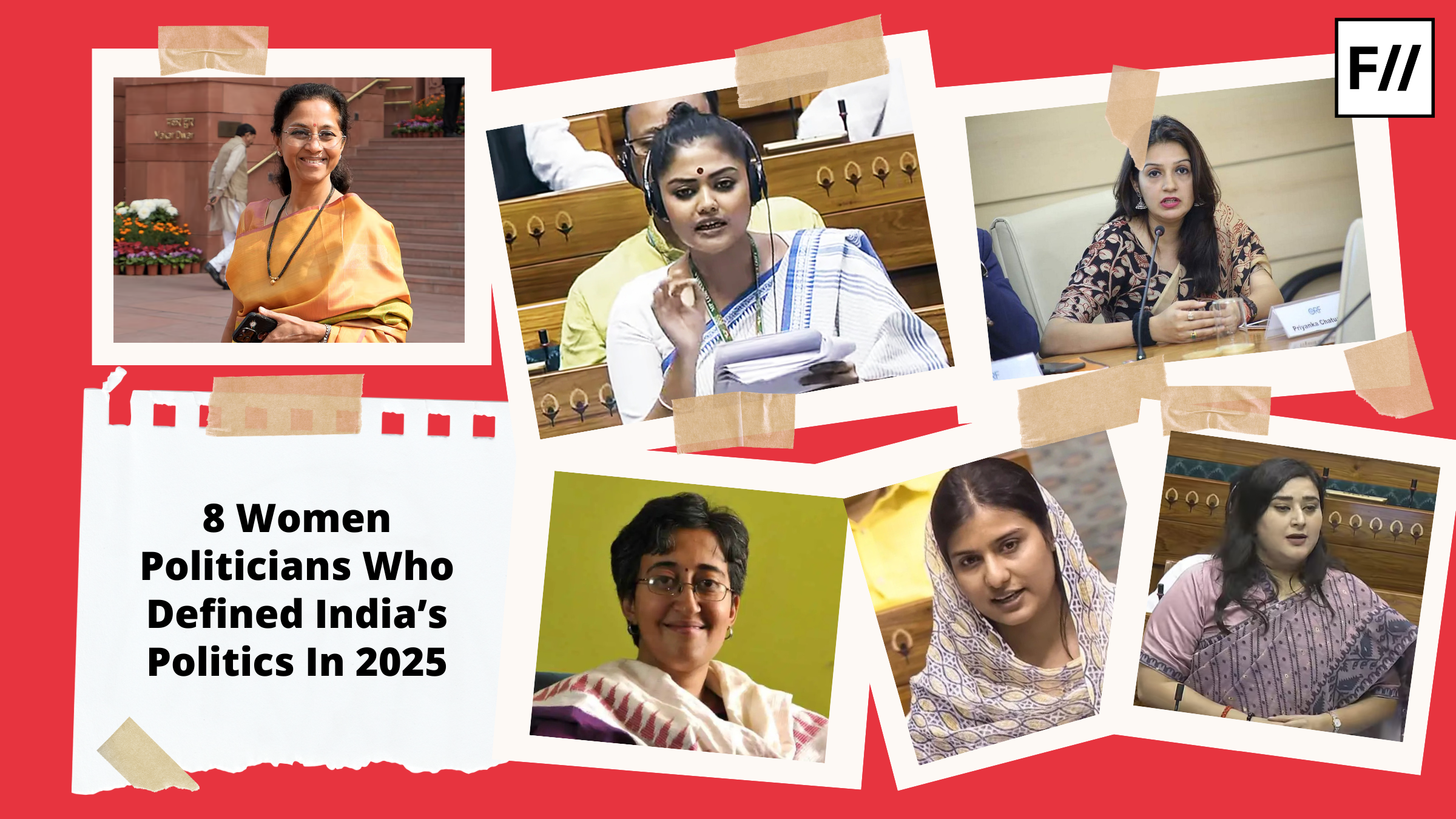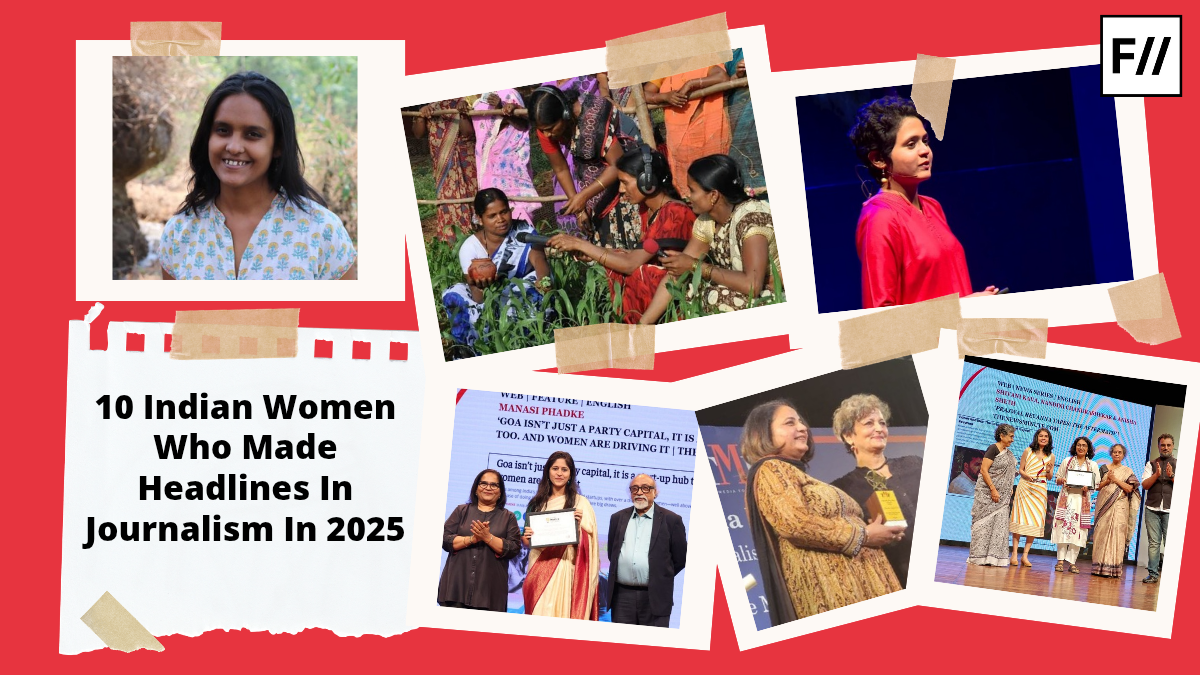The right to protest is not only enshrined in our Constitution but is also an integral exercise in any democratic set-up, ensuring political accountability through civic engagement and citizen democracy. However, with authoritarianism on the rise and dissent becoming increasingly penalised, protestors face ever-growing threats to their freedom of speech, expression, and assembly. But for women, protesting comes with gendered risks that go beyond the usual threats the state and its institutions pose.
In India, women have often been at the forefront of protesting. In many of the important protests in the last few years, women have played a central and indispensable role. The Shaheen Bagh protests, the farmers’ protest, the wrestlers’ protest and the R G Kar protests last year all saw women taking to the streets and fiercely leading. More recently, the protests against the Supreme Court’s stray dog order and the INDIA bloc MPs’ protest against the Bihar SIR both saw considerable participation by women but also saw repression, detainments, and reprisals.

While severe repression has become a quotidian reality of expressing dissent that all protestors are subjected to, women take on additional forms of gendered risk when they attempt to exercise their rights as political actors, due to institutionalised patriarchy. Then, for women to truly enjoy their freedom of speech, expression, and assembly, only ensuring the ability to protest is not enough; the ability to protest safely is essential.
Brutal police response aimed to deter
Women bear the brunt of some of the worst repression tactics employed by law enforcement, aimed not only at shutting down protests but also at serving as a deterrent. Sexual harassment, sexism, and violence are all features of police response to women protesting.
Sharanya, a student at Ambedkar University, Delhi, and the treasurer of AUDSC-KG, said*, ‘I have experienced violence, intimidation, and differential treatment at the hands of the police during protests. Violence is often inflicted upon all protestors, but when it comes to women and gender minorities, there is an element of moral policing.‘
Speaking to FII regarding her experiences with the police during student protests, Sharanya, a student at Ambedkar University, Delhi, and the treasurer of AUDSC-KG, said*, ‘I have experienced violence, intimidation, and differential treatment at the hands of the police during protests. Violence is often inflicted upon all protestors, but when it comes to women and gender minorities, there is an element of moral policing. A lot of times, women protestors are threatened with FIRs and police cases, the idea being that it would affect their futures more adversely because it is a transgression of established gender norms.’
She further added, ‘What the police have started to do recently is make the post-detention period punishing. Instead of holding protesters at the nearest police station, they have begun taking us to faraway police stations (sometimes even at the Haryana border) or police stations around which public transport is hard to come by. A lot of women have to deal with familial restrictions and hostel curfews; this, when combined with the fact that travelling at night can be unsafe, makes the entire process more tedious and punishing, which is intended to deter.’
Apart from using such tactics or employing physical violence, police also resort to sexually harassing female protestors to deter further participation in protests. In 2018, a student protester at JNU was harassed, manhandled, and had her clothes intentionally torn by the Delhi police. Sheena Thakur said she heard the police personnel say ‘Kapde phaado’ (tear their clothes). Sharanya has also experienced things of a similar nature when protesting. This isn’t an anomaly either; there have been other instances of this over the years. Look at some media reports here, here, and here.

Alarmingly, measures dedicated to specifically managing women protestors are now being set in place. In Hyderabad, for instance, an all-female Swift Women Action Team (SWAT) task force trained in the Israeli martial art of Krav Maga was formedto handle women protestors. Initiatives like this will only allow the state to harshly repress protests and harass women protestors with impunity.
Measures like these aren’t aimed at increasing the role of women in policing; it is a tactic to curb dissent and avoid accountability behind progressive posturing. Most instances of violence and sexual harassment noted above involved women police personnel. Just this week, a woman protesting the Supreme Court’s stray dog verdict in Delhi was assaulted by a woman police officer. Induction of more women police officers in junior roles won’t remedy the gendered risk women protestors are confronted with. If anything, it allows the state more impunity in the use of excessive and unreasonable force.
Gender roles and women as political actors
In the patriarchal imagination, women’s rightful place is within the ambit of the domestic sphere. They have little to no role to play in public life, let alone political life. Even when institutions view the general right to protest as crucial, there is inequality in how institutions view women’s right to protest specifically. During the 2021 farmers’ protest, then Chief Justice of India S A Bobde’s remarks on the protesting women embodied the institutionalised patriarchy that governs socio-institutional responses to protests that see greater participation by women. Reiterating citizens’ right to protest, the Supreme Court declared it will not pass any orders that curb this right. However, Bobde followed that up by asking, ‘Why are women and elders kept in the protest?’
In the patriarchal imagination, women’s rightful place is within the ambit of the domestic sphere. They have little to no role to play in public life, let alone political life. Even when institutions view the general right to protest as crucial, there is inequality in how institutions view women’s right to protest specifically.
The language used here is telling. The notion that protesting women were being ‘kept’ at the protest site, as opposed to being active participants with political agency, reveals the underlying belief that women don’t have a legitimate claim to political life. In asking this question but alongside it reiterating citizens’ right to protest, S A Bobde treated women protestors as a distinct class whose claim to political rights is subordinate to those of men.
He also asked the lawyer representing the protesting farmers to ‘persuade’ the women to return to their homes and implied an order might be passed to this effect. Sharanya spoke of similar paternalistic posturing by the police. She said, ‘While protesting the Agnipath scheme, around 40 SFI comrades and I were detained, of which only the eight women present had FIRs registered against them. The police said [protesting] is unbecoming of women and asked us to consider the impact it would have on our families if they found out.’
Women’s participation in political activity is not just viewed as unnecessary but also as suspicious and meriting derision. During the farmers’ protest, MP Kangana Ranaut said that an elderly protestor was available for “100 rupees”, implying that the protesting women were installed at the protest sites as a political ploy. In another instance, senior BJP leader Dilip Ghosh threatened to assault protesting women and told reporters they were sent by the TMC and were ‘barking for INR 500’.
Institutionalised patriarchy is at the root of all these instances. Women are expected to be devoid of all agency and political will. Speaking of this, Sharanya noted, ‘The institutional ire isn’t about what women are coming to a protest site to express dissent against, but about the fact that they are subverting patriarchal gender roles by even being there, and this is what draws such a harsh response.’ Sharanya and four of her fellow students are currently suspended after Ambedkar University security and police inflicted violence upon them. The university has also filed FIRs against the students. Of the FIRs, she said, ‘A suspension itself is enough to derail someone’s academic career, but the FIR serves to add an element of coercion and intimidation, especially in the case of women students.’
Differing gendered risks across the political spectrum
Considering the gendered risks women protestors contend with are borne out of institutionalised patriarchy, it is no surprise that such risks aren’t evenly distributed across the political spectrum. A study published in the American Political Science Review found that while protests involving extensive participation by women were seen as more non-violent and less deserving of repression, this perception didn’t hold for all women across political identities.
Protests spearheaded by feminists or women defying gender expectations were deemed to merit harsher repression tactics, even though they were just as non-violent as protests involving women who fit more squarely into traditional gender roles and emphasised their roles as mothers and wives. UN Women findings also support this, with UN Women asserting that protestors who are human rights or feminist activists face disproportionately more repression and reprisals, including violence, misogyny, and cyber harassment.
In the Indian context, the confluence of Hindutva politics with misogyny puts women protestors in a more precarious position. Since far-right politics is so enmeshed with traditional gender roles, when women protest for any cause, even for non-partisan causes like sexual violence or the stray dog verdict, the fact that they are out protesting and being politically involved itself is a transgression of patriarchal bounds and in opposition to the far-right’s rigid and traditionalist gender ideology.
However, when gender and politics intersect, this risk is amplified. Women, especially those who identify with left-wing and feminist politics, are a thorn in Hindutva’s side, not only because of their political views or gender, but the confluence of both. Women are then not only sidestepping patriarchal norms of propriety and defying gender norms by exercising their agency as political actors but also by going against the dominant political narrative, neither of which, in the patriarchal imagination, they have any business doing.
Women’s participation in large-scale protest movements can bring about positive changes in gender relations and inform perspectives regarding gender equality. Women entering public and political life results in better outcomes for them across the board. However, this means straying further from patriarchal diktats and shifting power structures to bring about greater gender equity. Thus, in a country where patriarchy is woven into every fabric of social and political life, it is no surprise that women who protest are confronted with a world of gendered risk aimed at silencing them and containing them to the margins of political life.
(*Quotes have been edited for clarity and length.)
About the author(s)





